Is Clay Soil Acidic? (How to Know Your Soil pH)
Where I live, we have red clay soil and I’ve often wondered while gardening if clay soil is acidic (low pH). I did some research to answer this question and learned a lot about soil pH values, soil fertility, vital nutrients, and how pH changes can contribute to healthy plant growth!

Growing at least some of your own food during the growing season is a good idea, and can save a lot of money on feeding your family. But since most fruits and vegetables prefer a slightly acidic soil, it’s important to know your soil’s pH level.
So let’s answer the main question first.
Is Clay Soil Acidic?
Clay soil can be either acidic (low pH) or alkaline (high pH), because clay simply refers to a type of soil texture. You can’t judge soil acidity or alkalinity based on soil type, but there are ways to determine if your soil is acidic or alkaline based on other factors.

Let’s go over some soil facts.
The Four Main Types of Soil are Clay, Sand, Silt, and Loam.
Soil is defined by how large or small the soil particles are…the texture. Particle size can range from large rocks all the way down to clay soil.
Although there are hundreds of soil types, the four main types are clay, sand, silt, and loam. Honorable mentions include chalk, and peat.
Clay soil has the smallest soil particle size and feels sticky or slippery.
Clay soil has the smallest soil particles that can only be seen using an electron microscope. Because fine clay particles are so small, there’s not a lot of space for air and water doesn’t drain very quickly.
Also, when clay dries out, it’s as hard as bricks and is very hard to till. Plant roots don’t have a chance in these conditions.
Clay is actually composed of different minerals that have broken down to microscopic small particles over time. And it comes in various colors including red, yellow, orange, gray, blue, and more, depending on the minerals present.
To determine if you have heavy clay soil, take a handful of moist soil and squeeze it in your hand. Does it feel sticky or slippery? When you open your hand and poke the soil with your finger, does it hold its shape or does it break apart? If it feels sticky or slippery and holds its shape, you have a lot of clay in your soil.
The remedy for too much clay in the soil is to add plenty of organic matter to the top of the soil in your garden bed.
Adding cover crops, leaves, wood chips, animal manures, compost, and other plant material is a great way to lighten the soil over time, and will eventually turn dense clay into a clay loam.
Sandy soil has large soil particles and feels gritty.
Sandy soil has large soil particles that you can see. Because the soil particles are larger, the air pockets are large and water drains quickly out of the soil.
Sand won’t get compacted the way clay will, but added nutrients are washed away when you water your garden. Without much organic matter, sandy soil is generally poor soil that lacks vital nutrients.
To determine if there’s a lot of sand in your soil, take a handful of moist soil and squeeze it in your hand. Does it feel gritty?
When you open your hand, does the soil fall apart and break away or does it hold its shape? If it feels gritty and falls apart, you have a lot of sand in your soil.
The remedy for too much sand in the soil is to add plenty of organic matter into your garden bed.
Soil additives like leaves, wood chips, animal manures, compost, and other organic matter builds the soil over time and will eventually turn it into a sandy loam.
Silty soil has medium soil particles and feels silky.
Silt is the soil texture between clay and sand. There’s a good amount of space between silt particles for air and water to drain, but not so much space that it dries out quickly the way sand does.
Silt is a good soil that has a fair amount of nutrients. It’s also good for growing plants, but it doesn’t absorb water the way loam does.
To determine if there’s a lot of silt in your soil, take a handful of moist soil and squeeze it in your hand. Does it feel smooth like flour?
When you open your hand, does the soil hold its shape until you poke it with your finger? If it feels silky smooth and holds its shape yet is easy to change its shape, you have a lot of silt in your soil.
While silt is pretty good for growing plants, it could be improved if you add some organic matter into your garden bed.
Loam is the best gardening soil because it’s full of organic material.
Loam is the ideal combination of soil with decaying organic matter. If you have clay soil and you add compost, you’ll have clay loam over time. Sandy soil and compost gives you sandy loam over time. If you have silty soil and you add compost, you’ll have silty loam over time. You get the idea.
All of that adds up to soil that can be easily worked and that holds in moisture and nutrients in appropriate amounts. Beneficial lifeforms in loamy soil can thrive and plants get the ideal soil environment to meet their needs and be productive.
Now let’s discuss soil acidity.
Is Clay Soil Acidic (Low pH) or Alkaline (High pH)?
We measure soil acidity by the soil pH (potential hydrogen). The pH scale measures the activity of the hydrogen ion. The soil pH is low (acidic) when the concentration of hydrogen ions is high. Alternatively, the soil pH is high (alkaline) when the concentration of hydrogen ions is low.
Each pH number is multiplied by a factor of 10. For example, pH 6 is ten times more acidic than pH 7 and pH 6 is 100 times more acidic than pH 8. For reference, a neutral pH is 7.0.
How Do You Find Out Your Soil Acidity?
To find out your soil acidity, you can take a soil sample and send it to a lab for testing. You can also observe the types of plants that are growing well and do a quick Google search to see which soil pH is ideal for that particular plant.
Additional methods include searching government soil survey archives, or using a home soil testing kit or soil meter.
You can determine your soil’s acidity by sending in a soil sample for testing.
Your county agricultural Extension office can help you with taking a soil sample and sending it to a lab for analysis. If you’d like to know more about your soil, I wrote a post about laboratory soil testing and resources for gardeners.
That post will tell you everything you need to know to collect the perfect soil sample, how to send the sample off to your local lab, and how to read the soil analysis.
This is a great option and one that I recommend all gardeners start with when they decide they want to start a vegetable garden or fruit orchard.
You can determine your soil’s acidity by observing what’s already growing.
Perhaps the easiest way to tell if your soil is more acidic or alkaline is to observe what’s growing in your area. Although it will give you a clue about your soil acidity, it won’t give you an exact pH reading.
Do you see acid-loving plants like dandelions, broom sage, and cedar or pine trees where you live? That’s a sure sign that you have acidic soil. I wrote a post on the signs of an acidic soil and how to make soil more alkaline if you’re interested in learning more.
You can determine your soil’s acidity by searching government soil survey archives.
In the United States, the U.S. Department of Agriculture (USDA), Natural Resources Conservation Service (NRCS) has a free online archive of soil surveys done in all the states. Other countries have similar government resources available.
The USDA NRCS online archive of soil surveys by state has tons of detailed information. All you have to do is select your state, and then select the county you live in. If a soil survey has been done in your county, it’ll be there.
NRCS soil surveys are done at the county level and about 95% of counties nationwide have had a soil survey done. My county is in the 5% without a soil test but it’s probably similar to neighboring counties. Some of the surveys are over 100 years old and full of interesting and detailed information!
Here’s a summary of soil acidity in the United States, although some pockets within these geographic areas have different soil acidity.

You can determine your soil’s acidity by using a chemical or electronic home soil test.
A chemical soil test kit easily measures your soil’s pH. Even though I wouldn’t test my nitrogen, phosphorus, and potassium with a home soil test kit (details why are in my post on Laboratory Soil Testing and Resources for Gardeners), it’s pretty accurate at measuring your soil’s pH.
An electronic soil tester measures your soil’s pH but some models also measure moisture, daylight, and some nutrients.
I’m not sure how accurate the other settings are, but I’ve used the meter to test pH with pretty good results in the past. For best results, make sure your soil is moist to get an accurate reading and try not to damage the probe.
The probe of the electronic soil test meter detects if the soil is more negatively charged (alkaline soil, high pH level) or positively charged (acidic soil, low pH level).
Home soil tests might be able to give you your soil’s pH level but it can’t tell you other necessary information like the chemical properties or how much lime to apply to sweeten your soil. Consistently accurate results can only come by submitting samples to soil testing labs.
Why is knowing soil acidity important?
Knowing your soil acidity is important because most fruit and vegetable plants need a slightly acidic garden soil pH of about 5.8 to 6.5 to thrive.
One of the reasons for this is because fruit and vegetable plants need healthy soil full of microorganisms, bacteria, and fungi. The microorganisms that convert nitrogen into a form that plants can use and bacteria that decompose organic matter into humus do best within the slightly sour pH range.
Another reason is because soil nutrients are most available for plants to absorb within the slightly acidic pH range.
Is clay soil good for plants?
Having some clay in your soil is good for plants because clay keeps moisture and nutrients from washing away too easily.
But if there’s too much clay in your soil, it will drain poorly and drown your plants. On the flip side, clay will dry out and harden like a brick in the hot sun, which will strangle your plants.
Your plants will be better off with a soil solution that is part clay, part sand, part silt, and part loam.
The remedy for any soil texture problem is always to add organic matter like compost, animal manures, and wood chips. Organic matter added to sandy soil will help keep in the moisture and nutrients. Organic matter added to clayey soil will help lighten the soil so you can dig into it easier.
You can raise your soil pH by applying lime or wood ashes.
The best way to make acidic soil more alkaline is by spreading lime and wood ashes. Lime makes your soil more alkaline, reduces the harmful effects of low pH, and provides calcium and magnesium to the soil. Adding wood ashes (or potash) does all that but also gives a good amount of potassium.
The amount of lime or wood ash you need will depend on your current pH, the nutrient levels, and the buffering capacity of your soil.
The most common liming materials are calcitic (which provides only calcium) and dolomitic (which provides both calcium and magnesium) agricultural limestone. These are natural products made from finely ground limestone and react with the soil to neutralize soil acidity.
The best time to apply lime and wood ash is in the fall or as soon as you can after discovering that the pH is too sour. You need to wait at least 3 weeks before you can plant anything, but hopefully you have longer so that the soil pH can begin to change. Resting your soil for several months is ideal.
Here’s a table to help you determine which alkaline soil amendment to use based on your soil’s existing nutrient levels:
| Calcium Level | Magnesium Level | Potassium Level | Amendment |
| low | normal or high | normal or high | calcitic lime |
| low | low | normal or high | dolomitic lime |
| low | low | low | wood ash (potash) |
You can lower your soil pH by applying pine needles and leaves.
The best way to make alkaline soil more acidic is by spreading acidic substances including pine needles, peat moss, oak leaves, leaf mold, wood shavings, or sawdust in the fall. I like these organic options best because they’re widely available and some are free…plus they are a natural method to turn neutral soil into slightly acid soil.
You can also lower soil pH by adding soil amendments like sulfur or aluminum sulfate to the soil surface, or by fertilizing with ammonium fertilizers over several years. With the addition of elemental sulfur, soil bacteria oxidize the sulfur to sulfate, creating sulfuric acid, which lowers the pH of the soil.
Whatever amendment you choose, work them into the top several inches of soil. Then give it several months to start changing your soil pH.
If you can’t determine your soil pH, just add compost!
When you can’t be sure of your soil’s pH, just add compost! The good thing about large amounts of organic matter is that over time it improves your soil structure, adds better drainage, increases essential nutrients, and brings your soil pH closer to the neutral point.
This post contains affiliate links. As an Amazon Associate I earn from qualifying purchases. That means I make a small commission at no cost to you if you place a qualifying purchase through any of the links. Read my full disclosure here. Thanks for your support!
Shop This Post!
Other Related Posts
How to Get Rid of Tiny Black Bugs on Tomato Plants
Laboratory Soil Testing and Resources for Gardeners
Signs of Acidic Soil (Low pH) and How to Make it Alkaline
How Much Worm Castings Should You Add to Soil?
Pin It For Later!


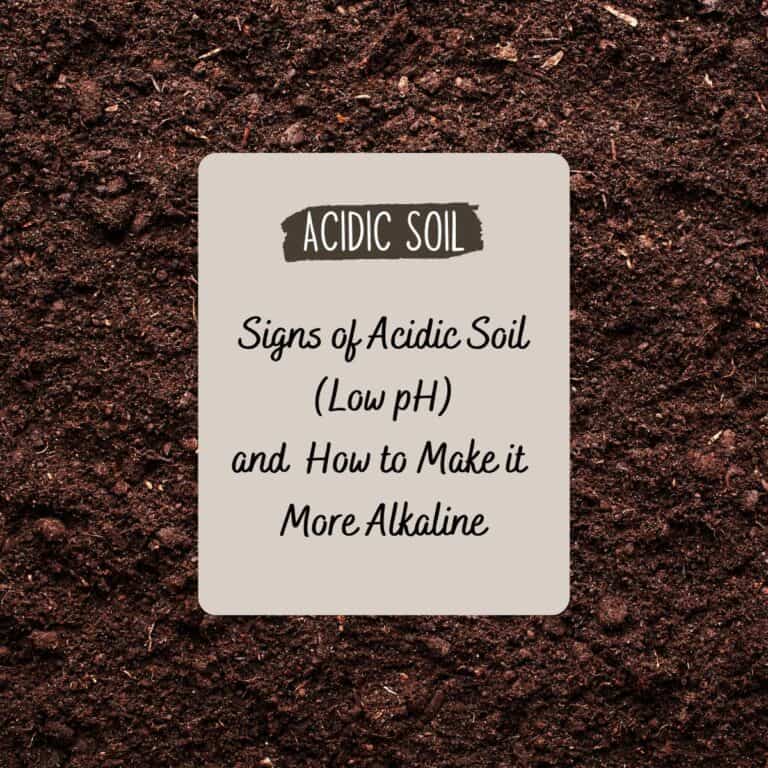
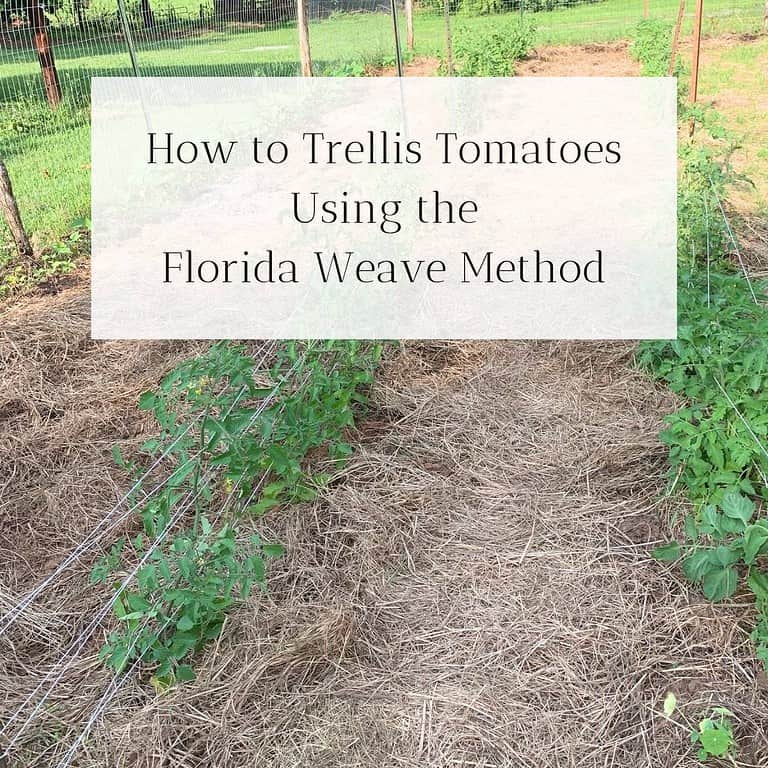
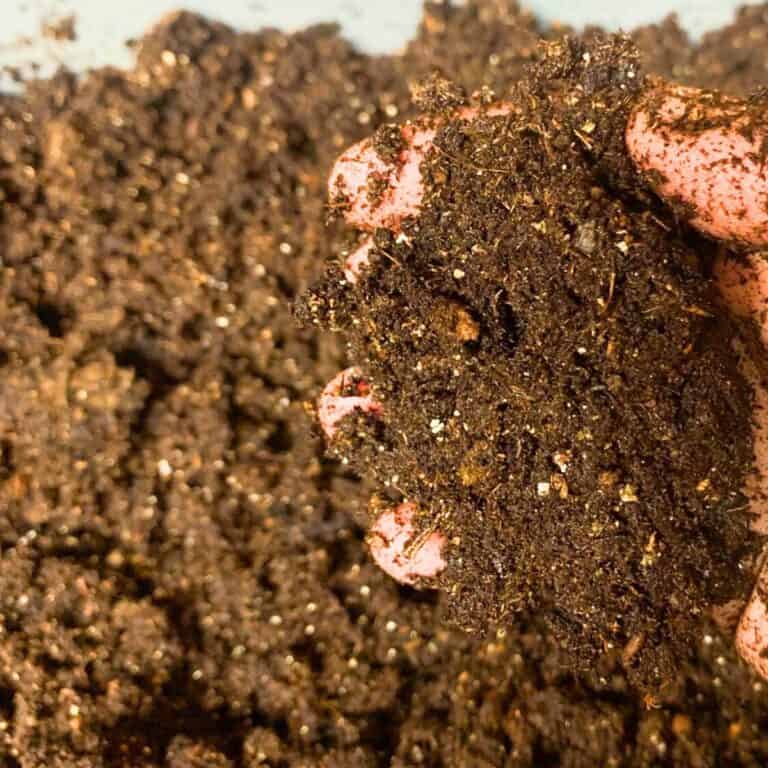
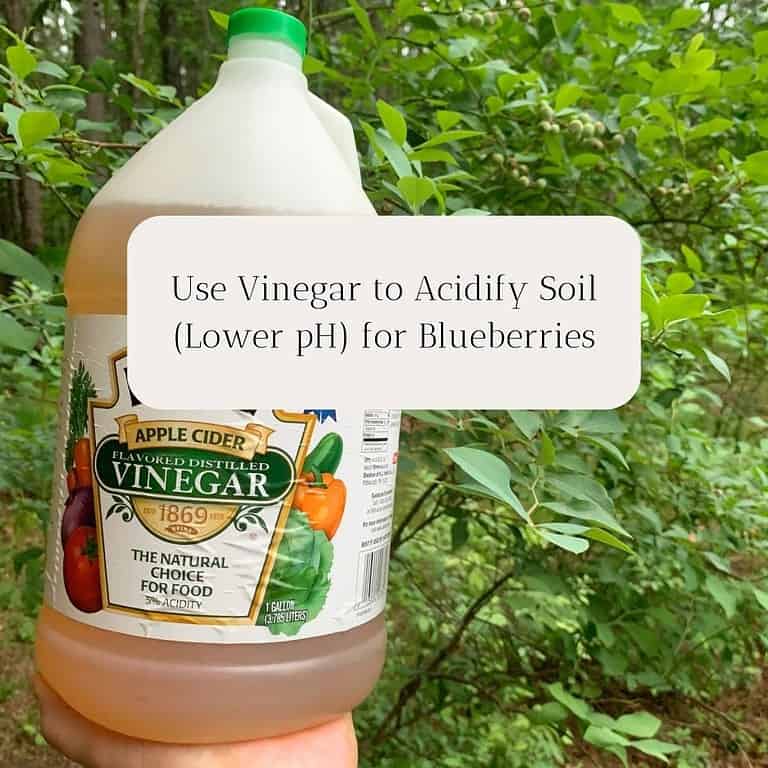

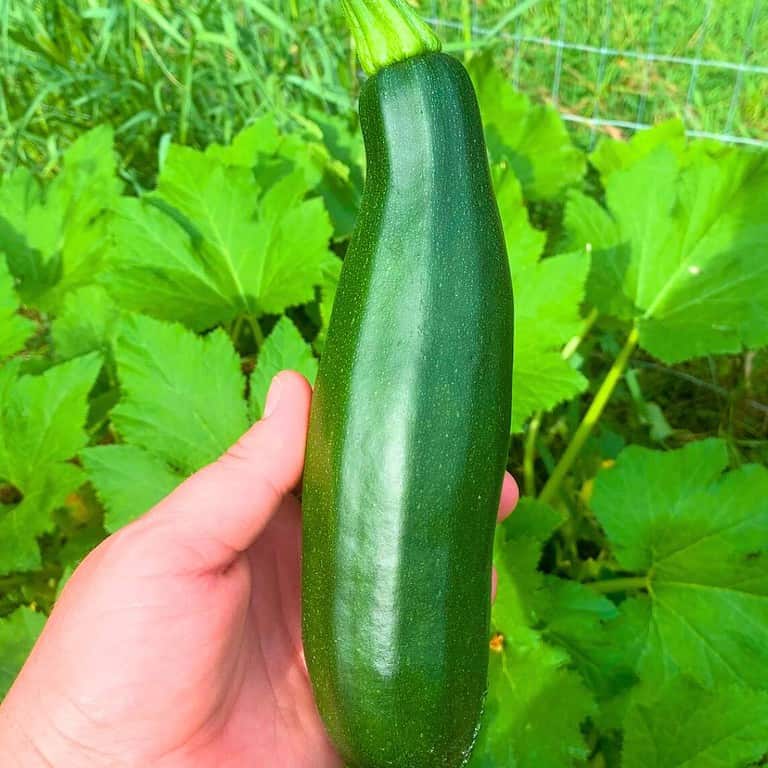
This is such an important topic. I think soil is one of the top things beginning gardeners don’t put enough weight on, the other is water quality. Great information!
Wow such a great, comprehensive post! I’m new-ish to gardening and trying to make what I just planted stay alive haha. I might have to get one of those soil kits you mentioned to see about the ph of my soil. Is it better to test your soil prior to planting or during?
Welcome to gardening! Don’t worry, every garden is a learning experience no matter how many years you have under your belt! But you’ll get better and more successful the longer you do it. A first-year garden is always the hardest. Plants that survive the first year and become established will be easier to keep alive! To answer your question, it’s better to test your soil prior to planting anything because it takes time to correct soil pH. But you can check your pH now and see where you’re at. If you’re too alkaline and planted fruit or vegetables, add some diluted vinegar, pine needles or other acidic amendment like coffee grounds, wood shavings, or sawdust around the base of your plants. If you’re too acidic, raise the pH by adding some ground lime. In either scenario, adding compost around the base of your plants will help bring your soil pH closer to neutral. Good luck in your garden!
Great tips! I believe we had clay soil when we lived in Texas, and it was hard for me to grow anything.